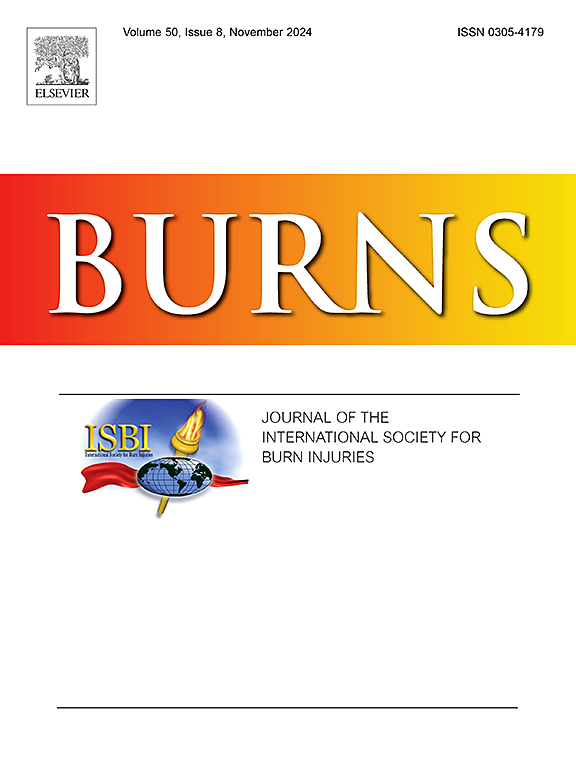Association of the skin microbiome with the biomechanical scar properties in patients with burns
IF 3.2
3区 医学
Q2 CRITICAL CARE MEDICINE
引用次数: 0
Abstract
Background and objectives
Skin microbiome dysbiosis can cause skin barrier dysfunction and stimulate scar property change. Skin barrier disruption post-burn injury leads to an imbalance in skin microbe diversity and distribution. We aimed to examine the changes in the skin microbiome of re-epithelialized burn scars.
Material and methods
Twenty three patients were enrolled between January 2020 and July 2022. Twenty-six (13 Scar 1, immediately after complete wound healing; and 13 Scar 2, 3 months after complete wound healing) of seventy-eight scar skin samples (39 Scar 1 and 39 scar 2) qualified for analysis. Microbial community analysis was performed. Biomechanical scar properties of each patient and their correlation with skin microbiome were investigated.
Results
The α-diversity of the scarred skin microbiome increased with time (Shannon’s index, p = 0.029; Simpson’s index, p = 0.009). The linear discriminant analysis effect size results showed that Bacteroides abundance decreased in scars after 3 months, whereas Campylobacter and Cutibacterium abundance increased. Campylobacter and Cutibacterium negatively and positively correlated with the final distensibility gross and biological elasticity, respectively. These results were consistent with the changes in the biomechanical properties of scars.
Conclusion
The scar skin microbial communities in patients with burns changed with biomechanical scar properties over time, and specific skin microorganisms correlated with biomechanical scar dynamics at the genus level.
求助全文
约1分钟内获得全文
求助全文
来源期刊

Burns
医学-皮肤病学
CiteScore
4.50
自引率
18.50%
发文量
304
审稿时长
72 days
期刊介绍:
Burns aims to foster the exchange of information among all engaged in preventing and treating the effects of burns. The journal focuses on clinical, scientific and social aspects of these injuries and covers the prevention of the injury, the epidemiology of such injuries and all aspects of treatment including development of new techniques and technologies and verification of existing ones. Regular features include clinical and scientific papers, state of the art reviews and descriptions of burn-care in practice.
Topics covered by Burns include: the effects of smoke on man and animals, their tissues and cells; the responses to and treatment of patients and animals with chemical injuries to the skin; the biological and clinical effects of cold injuries; surgical techniques which are, or may be relevant to the treatment of burned patients during the acute or reconstructive phase following injury; well controlled laboratory studies of the effectiveness of anti-microbial agents on infection and new materials on scarring and healing; inflammatory responses to injury, effectiveness of related agents and other compounds used to modify the physiological and cellular responses to the injury; experimental studies of burns and the outcome of burn wound healing; regenerative medicine concerning the skin.
 求助内容:
求助内容: 应助结果提醒方式:
应助结果提醒方式:


